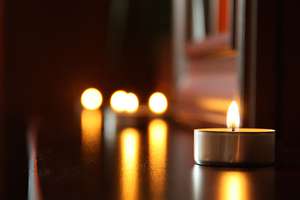Direct cremation is a disposition method where the body is taken directly from the place of death to the crematory and then returned to the family, without any ceremony or visitation. Aside from scientific donation, this is often the most affordable disposition option.
There are three main reasons people choose cremation over body burial:
- it's less expensive
- it saves land
- it provides increased mobility (i.e. it is easy to transport / relocate cremains)
A point of clarification before we get started: cremation replicates the same process that a buried body eventually undergoes. Over time, a buried body decomposes and ends up as ashes - just like what happens through cremation.
A description of direct cremation
Normally, the body stops at the funeral home or crematory (some funeral homes have their own on-site crematory) just long enough to secure the death certificate and cremation permit - and for the family to sign the cremation authorization form.
No funeral or visitation ceremonies are held when you choose direct cremation. Furthermore, the body is not embalmed, nor does it receive hair care or makeup application. Since the body will be cremated without first having a viewing ceremony, these services are unnecessary.
You do not need to purchase a casket for the cremation process. You can instead choose to place the body in a special cardboard box known as an "alternative container." This saves the expense of buying an expensive casket.
The actual cremation arrangements can be made directly with a crematory or at a funeral home. Some funeral homes do the cremation themselves; while others contract the actual cremation out to a separate crematory.
Direct cremation: a summary of the main steps
- removal of body to funeral home or crematory
- obtain permits and authorization
- body heated in a cremation oven (called a "retort")
- cremains (i.e. ashes) returned to family
- family can dispose of cremains as they see fit
Most families simply take the cremains home in a cardboard box or urn. Some families will later decide to scatter the cremains at a favorite location, bury them in a cemetery plot, or store them in an urn on the living room mantle.
If you would like to save money the next time you need to make funeral arrangements, you can search and compare local funeral home pricing at Parting.com.
See what a funeral costs in these popular cities:
Atlanta | Austin | Boston | Chicago | Dallas | Denver | Detroit | Honolulu | Houston | Los Angeles | Miami | Minneapolis | New York | Philadelphia | Portland | Sacramento | San Diego | San Francisco | San Jose | Seattle | Washington, DC












